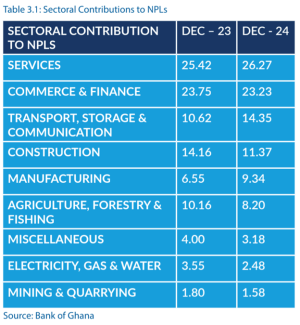
This article is triggered at the instance of visits to a couple of organisations in the month of January to transact business hence, the need to use their washrooms. Some of these organisations are prestigious, international and branded. Their washrooms are not desirable.
Please note that I will use organisation and corporate interchangeably. Here an organisation or corporate refers to an establishment that provides services like the Bank, Insurance, Law Firm, Media House, University, etc. particularly organisations that receive many clients or customers on daily basis. Arguably, one of the most important places in an organisation is its washroom.
A brief distinction between a bathroom and a washroom is whereas a bathroom has a shower plus other essentials, a washroom has a toilet bowl, toilet seat, hand washbasin, a tap flowing with water (warm or cold or both) among other essentials to be discussed in this article.
Many organisations have ignored the role the washroom plays in the reputation of the organisation. Corporate leadership and management encompasses every aspect of the organisational life of which the washroom cannot be overlooked. Sadly, many organisations as prestigious as they claim to be has very bad washrooms which strict monitoring of a Corporate Sanitation Agency; a sanitation regulatory body should have sanctioned them.
Howbeit, the failure of sector regulators to ensure strict sanitation inspections for compliance; corporate leadership and management should know better to keep a user-friendly corporate washroom as a sign of respect for their clients and/or customers. Cleanliness of the corporate washroom is a quality management standard that does not exonerate any corporate manager for its failure. Good corporate leadership and management takes responsibility for all quality failures of the organisation including the cleanliness of the washroom.
The ingredients that makes a user-friendly washroom includes; deep clean toilet bowl and seat, toilet roll holder with a good size toilet roll, hand washbasin, soap (liquid/cake), hand towel (usually disposable), hand dryer (optional), hand sanitizer. Negligently most of the organisations I visited does not have it all. The most nauseating part is when the tap is not flowing, no toilet roll and no soap. It becomes worst when there is water spillage on the flow; a previous user leaves the toilet bowl unflushed. The male washroom with urinary bowls without running water and drips of urine on the floor uncleaned makes an unpleasant smell in the washroom.
I will allude to seven (7) reasons why an organisation should keep its washrooms very clean always and three (3) reasons to achieving the desired results:
First, a very clean washroom provides fresh, hygienic environment – a non-negotiable health hazard is a populated air and a non-hygienic environment. Many bacteria and infections are transferred from non-hygienic washrooms.
To promotes healthy life, particularly when the organisation deals in foods and all forms of edibles, it is important to ensure that you keep a very clean washroom that provides fresh hygienic environment. The effect of a non-hygienic washroom is that it may results in infectious diseases not only to your clients and/or customers but more so your staff you happens to spend more time in the environment than your clients/customers who comes in and leaves soon after.
A sick staff may affect productivity as many will always take leave to attend the hospital and subsequently spend time to recover.
Second, a dirty washroom takes away a contributory factor of professionalism from the organisation – the professional image of an organisation is a summation of all aspects (human and material) display of the organisation. A proud staff like a proud client that uses a dirty washroom has no pride, and because the onus to keeping the washroom clean lies on the organisation, the client may walk away when they feel disrespect by the dirty washroom.
No organisation has the moral right to claim professionalism when they cannot keep their washroom clean. Productivity will be affected when employees are not comfortable with the organisation’s washroom and therefore cannot use it comfortably. Such level of discomfort can compel employees to behave unruly to clients and/or customers.
The next time you go to an organisation and an employee misbehaves; know that among the many causes for the misconduct may be a dirty washroom in the organisation.
Third, it is not for nothing that another name for a washroom is a rest room – for some who takes off their clothes completely when using the washroom, they actually want to be comfortable in there. When you have used the washed room comfortably, it feels like a good rest, which revitalises clients and employees self-esteem.
A dirty washroom shows disrespect to employees and customers. It shows that the organisation is not serious. They only want profitability yet not investing in the necessities that will promote client employee consistency of the washroom.
Fourth, prompt cleaning of the washroom saves cost – a regular and prompt cleaning of the washroom saves cost for the organisation because not much will be done at each cleaning session. An early detection of faults can be quickly remedied. Conversely, a deteriorated washroom will cost a lot more of money to fix.
Fifth, notices for guidance and appropriate use of the washroom becomes indispensable – posting of notices in text and pictures where necessary promotes the appropriate use of the washroom. Since employees serves customers, it is important to training employees on proper use of the washrooms particularly to keep their freshness and not transferring any unhygienic hands (proper washing of hands as directed by the Health Services and Centre for Diseases Control and Prevention) after using the washroom.
It is a common directive not to drop the used toilet roll in the toilet bowl (water closet). If not emphasised for prevention, the continuous practice will clog the water closet pipes and will cost the organisation money to unclog the pipes for proper flow of waste. Waste papers (toilet roll and hand paper towel) must be proper disposed in the appropriate waste bins provided in the washrooms.
Sixth, location of the washroom is critical – the washroom must be appropriately located in the organisation. Too far a distance to reaching the washroom may cause uneasy problems for employees and customers. Depending on the numbers of employees and customers, that patronises the organisation daily, the right number of washrooms must be provided. Keeping a queue to the washroom is a bad experience that must not happen repeated to same persons.
Seventh, clean washroom habituates effective business – need I say that clean washroom will definitely translate to effective business. Hygienic, odourless washroom fragranced with lavender makes both employees and clients happy. They are not in a rush to use the place. They take their time and come out smiling.
How to achieve the seven-desired result above:
One, pay the washroom staff well – know that the success of the organisation is a teamwork. Every member of the team must play his or her role unfailingly to ensure total victory for the team. The washroom staff must be paid well to motivate them to work joyfully. Good remuneration is a motivating factor for staff performance.
Two, monitoring, evaluation and continuous improvement – regular monitoring the cleanliness of the washroom must be enforced. The monitoring should not be a mere routin exercise but evaluating the level of cleanliness must be carried through. When a good standard of cleanliness has been achieved, it must not stop there but rather explore others ways to continuously improve from the standard attained. A good benchmark is the level of cleanliness of the washroom in a five star hotel.
A good level of cleanliness comes with a regular and prompt replenish of toiletries, constant flowing of water, constant fragrance and antiseptics in the washroom.
Three, regular repairs of broken sanitary wares and other fixtures – broken down of sanitary wares must be quickly changed. Perhaps budgetary allocation for regular and prompt repairs of sanitary wares and other fixtures in the washroom must be a standard item on every organisation’s budget. Items including cistern, tap, handles, holders, water pumps, toilet bowls and seats must be paid particular attention to.
In conclusion, a strict regulatory compliance where defaulters will pay a penalty and/or subsequent closure of the organisation or that particular branch must be in the often. An independent and strict regulatory monitoring and evaluation will provide employment for public health professionals. It will also encourage many to enrol into public health schools since they are assured of employment after graduation and above all promote a healthy organisation for development.
The post Education and Management with Nii Armah Addy: the corporate washroom appeared first on The Business & Financial Times.
Read Full Story



















Facebook
Twitter
Pinterest
Instagram
Google+
YouTube
LinkedIn
RSS